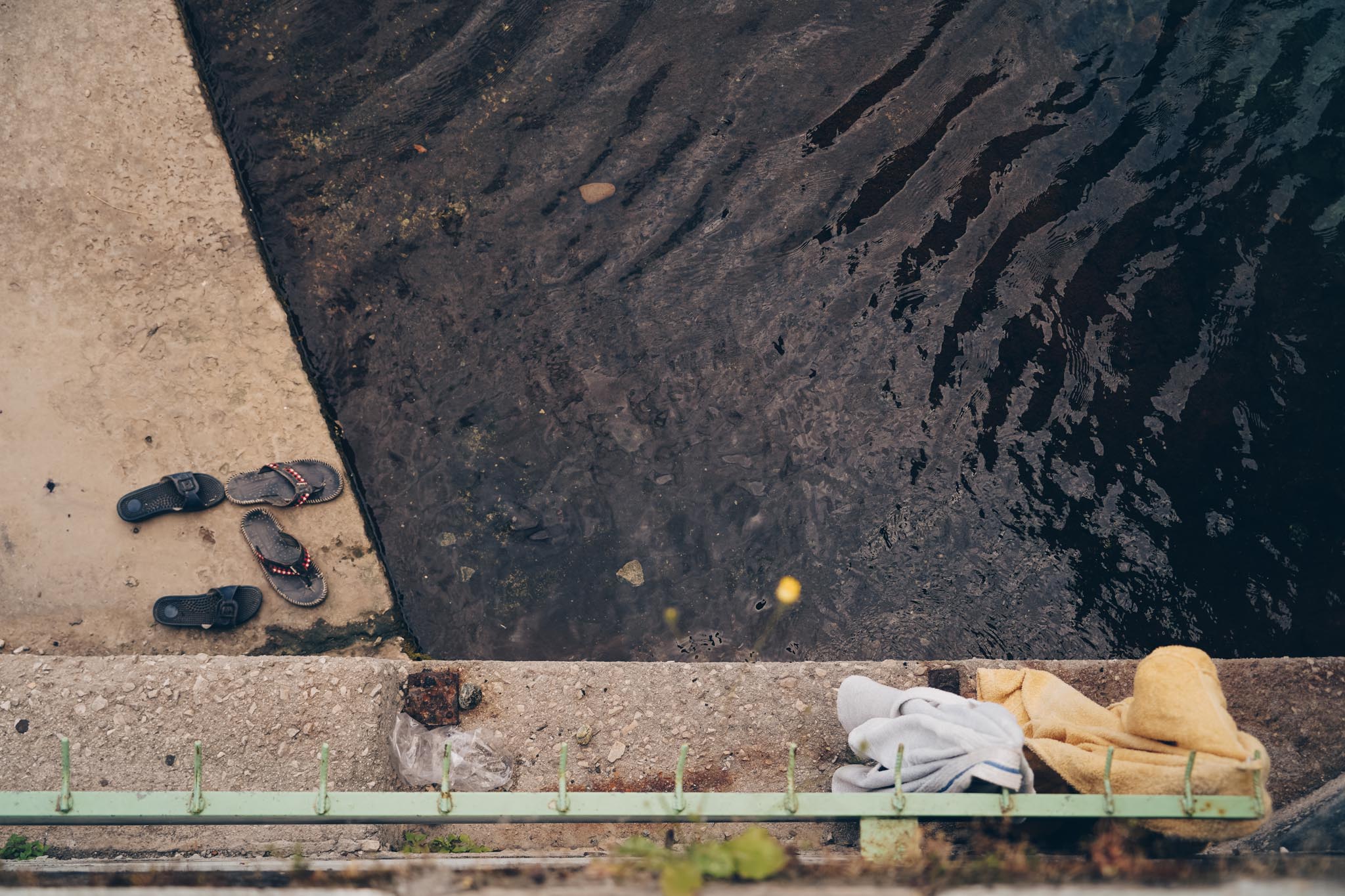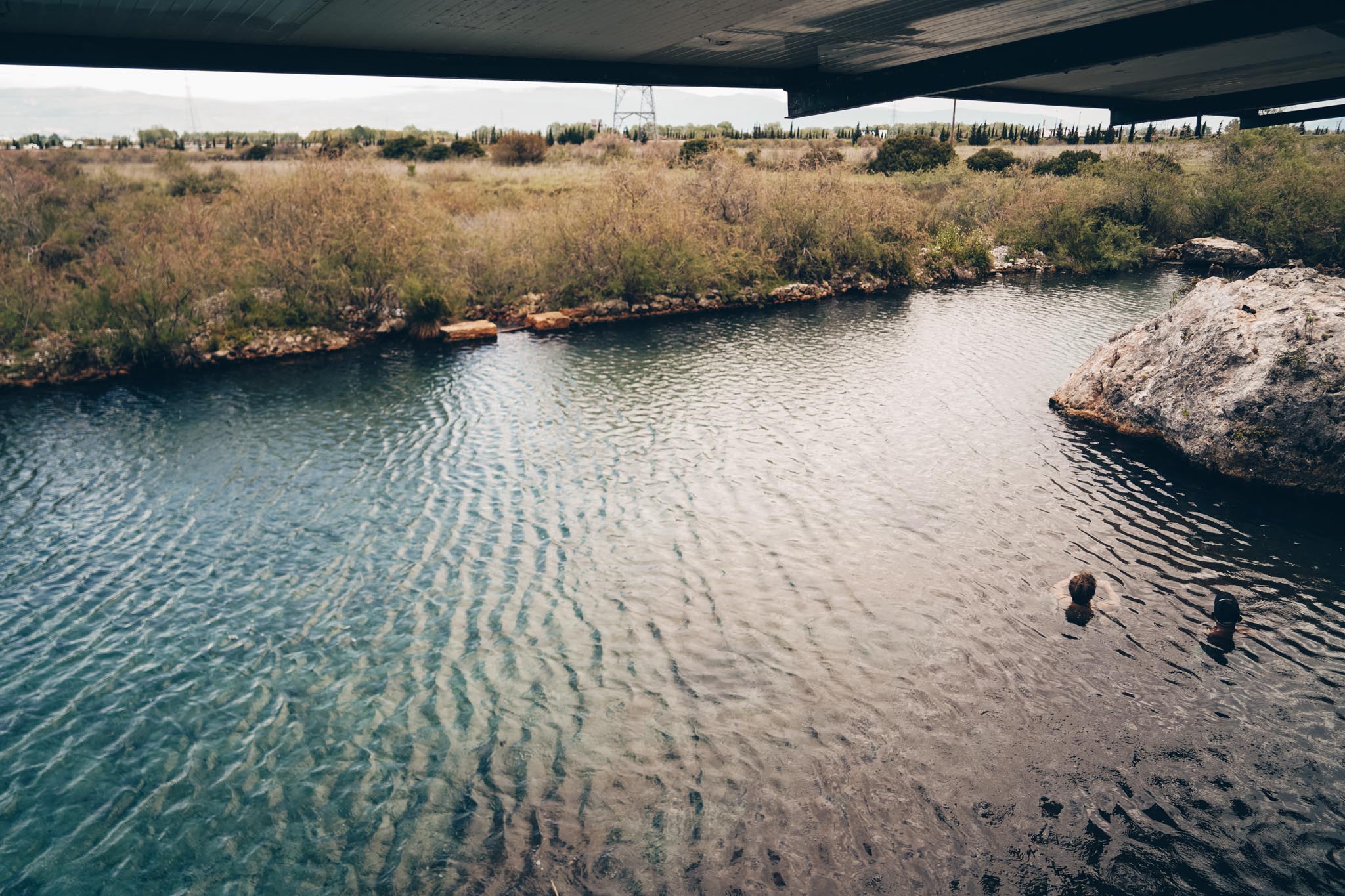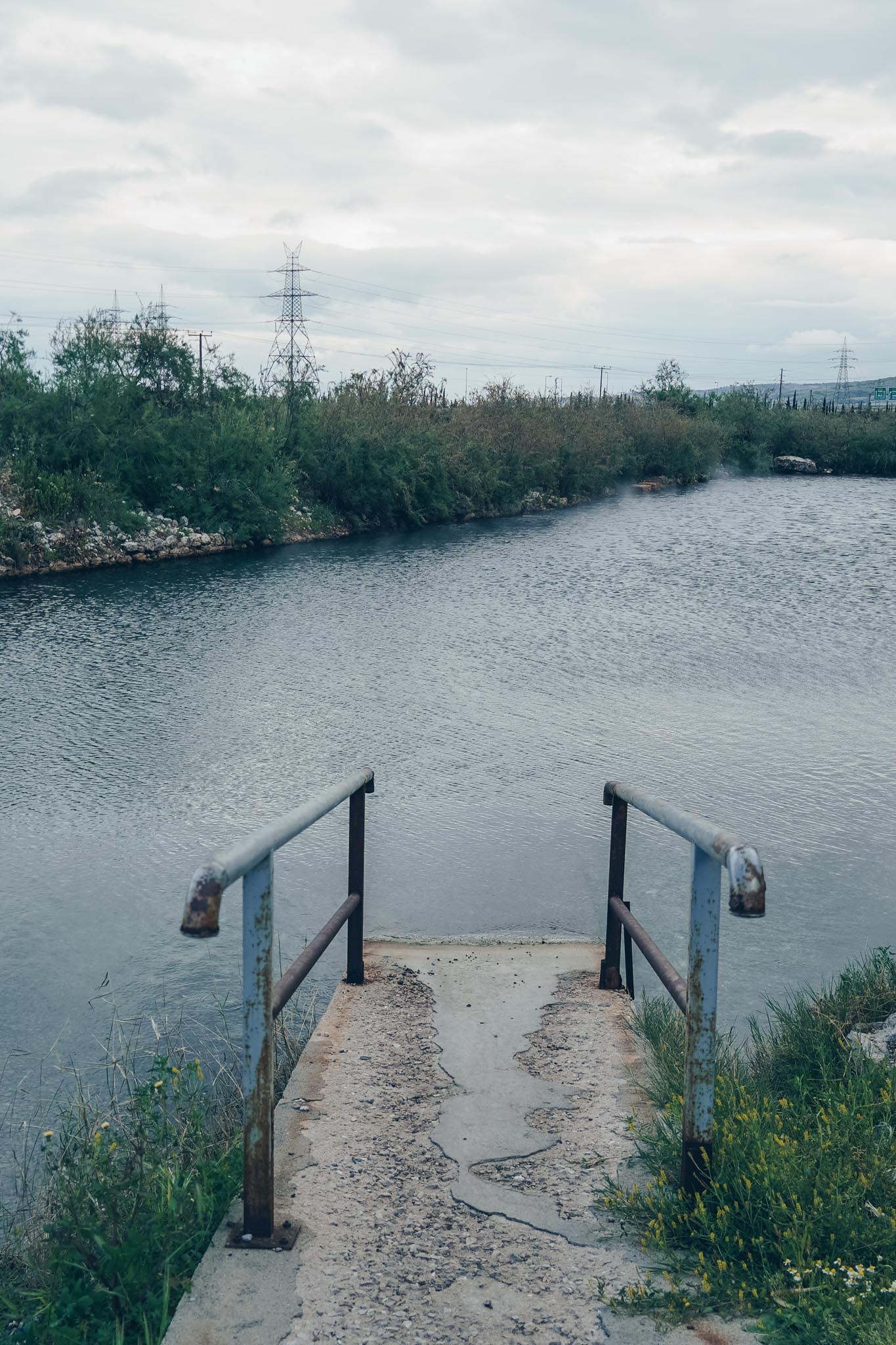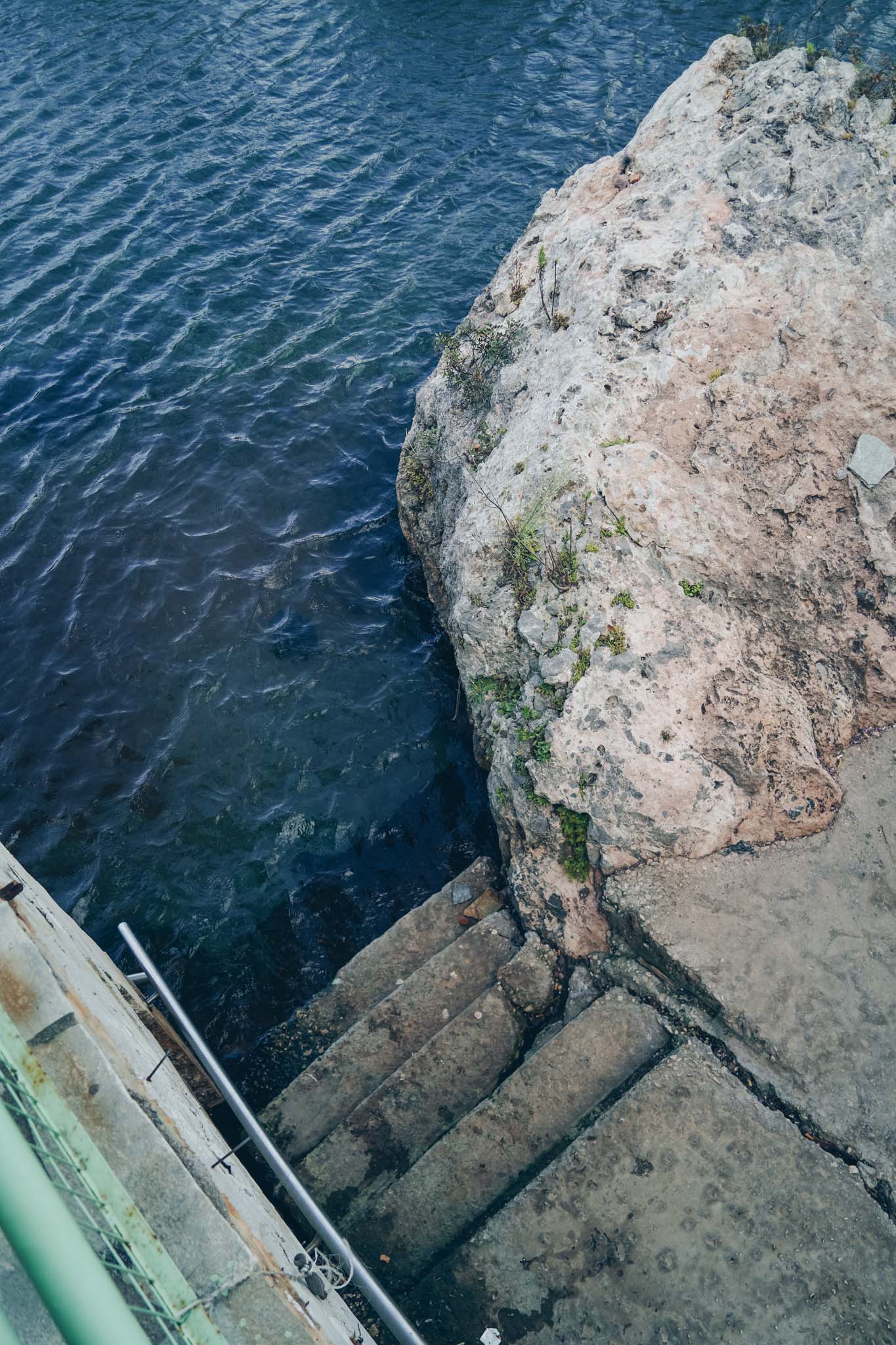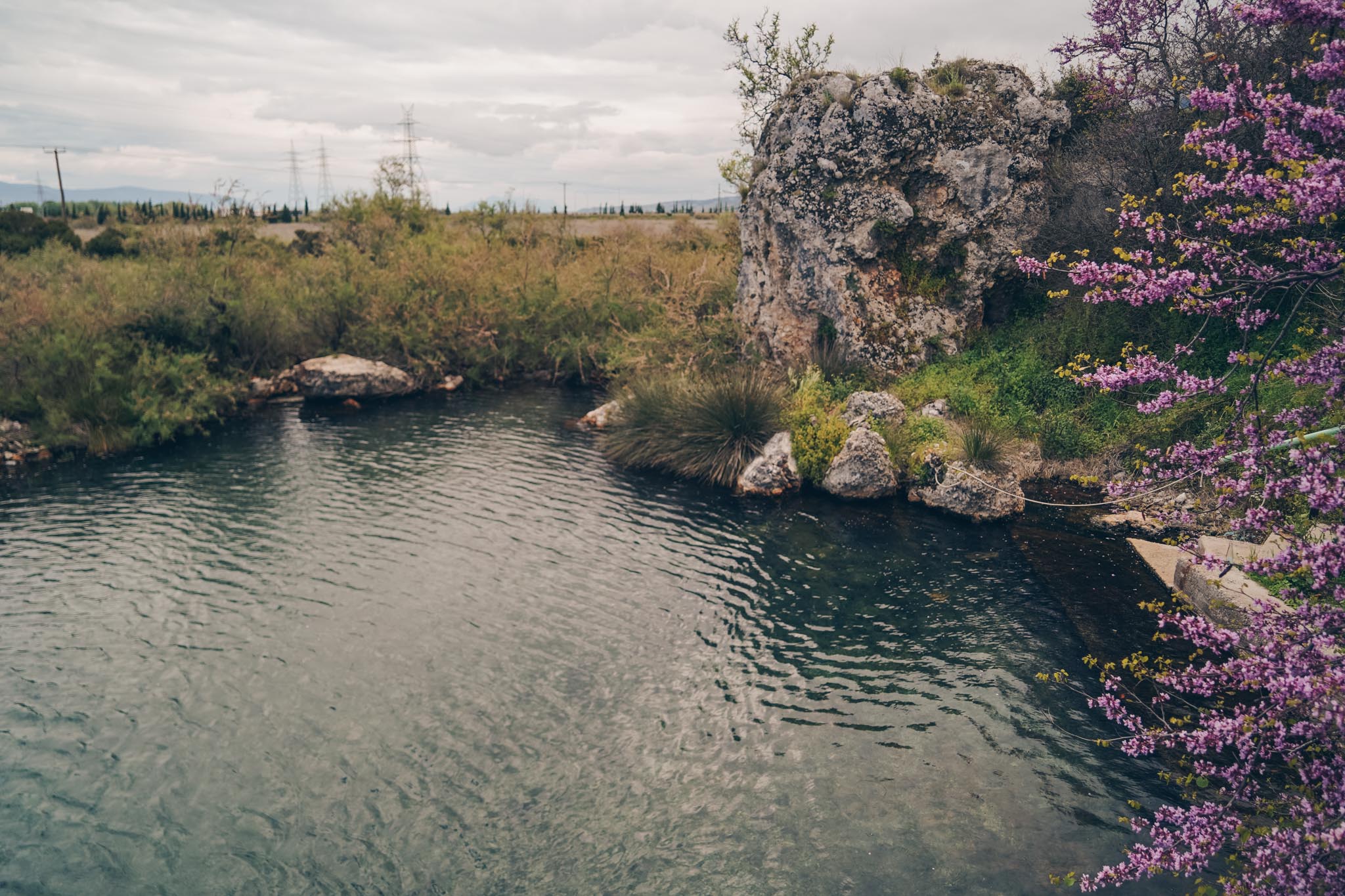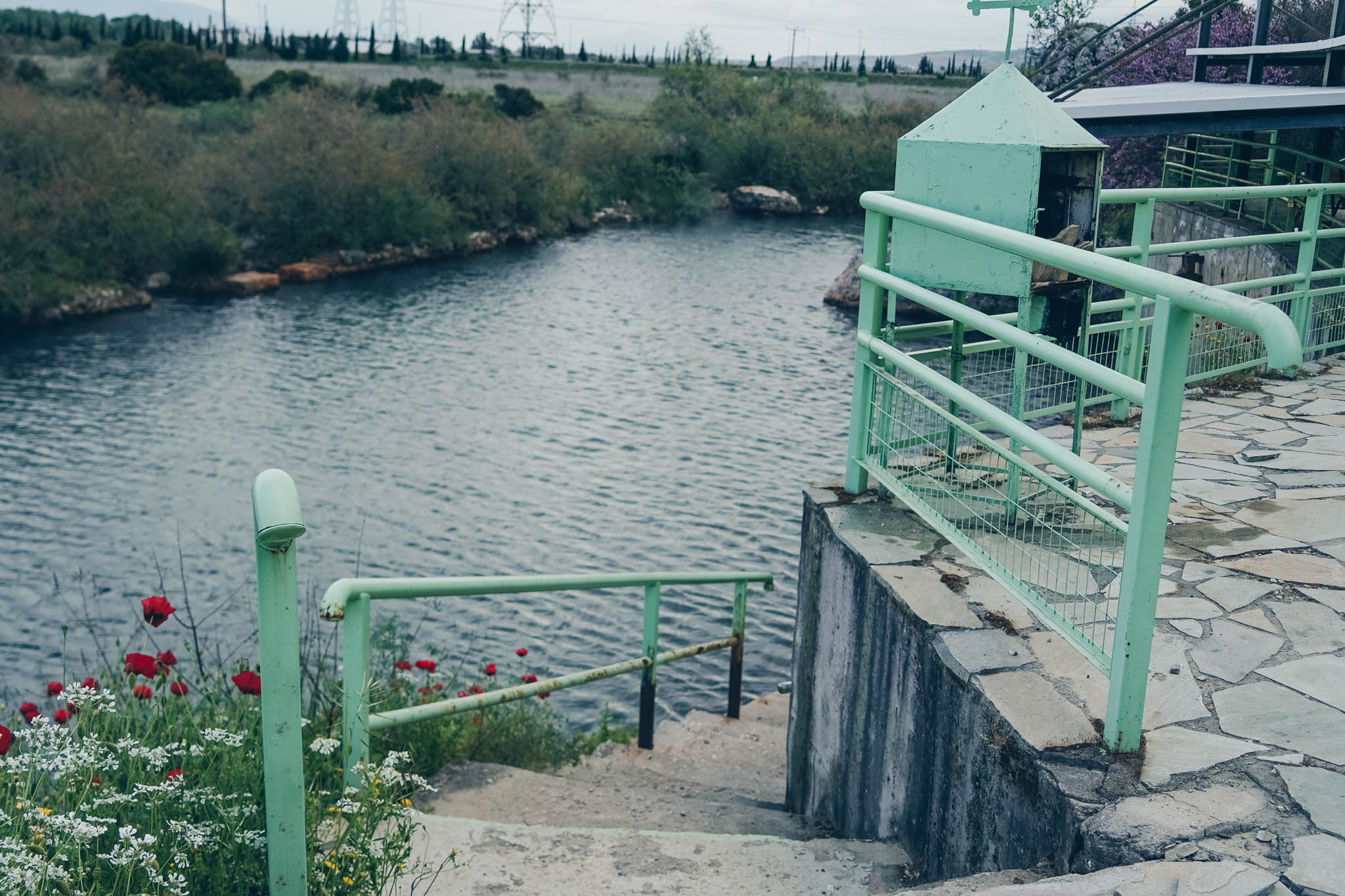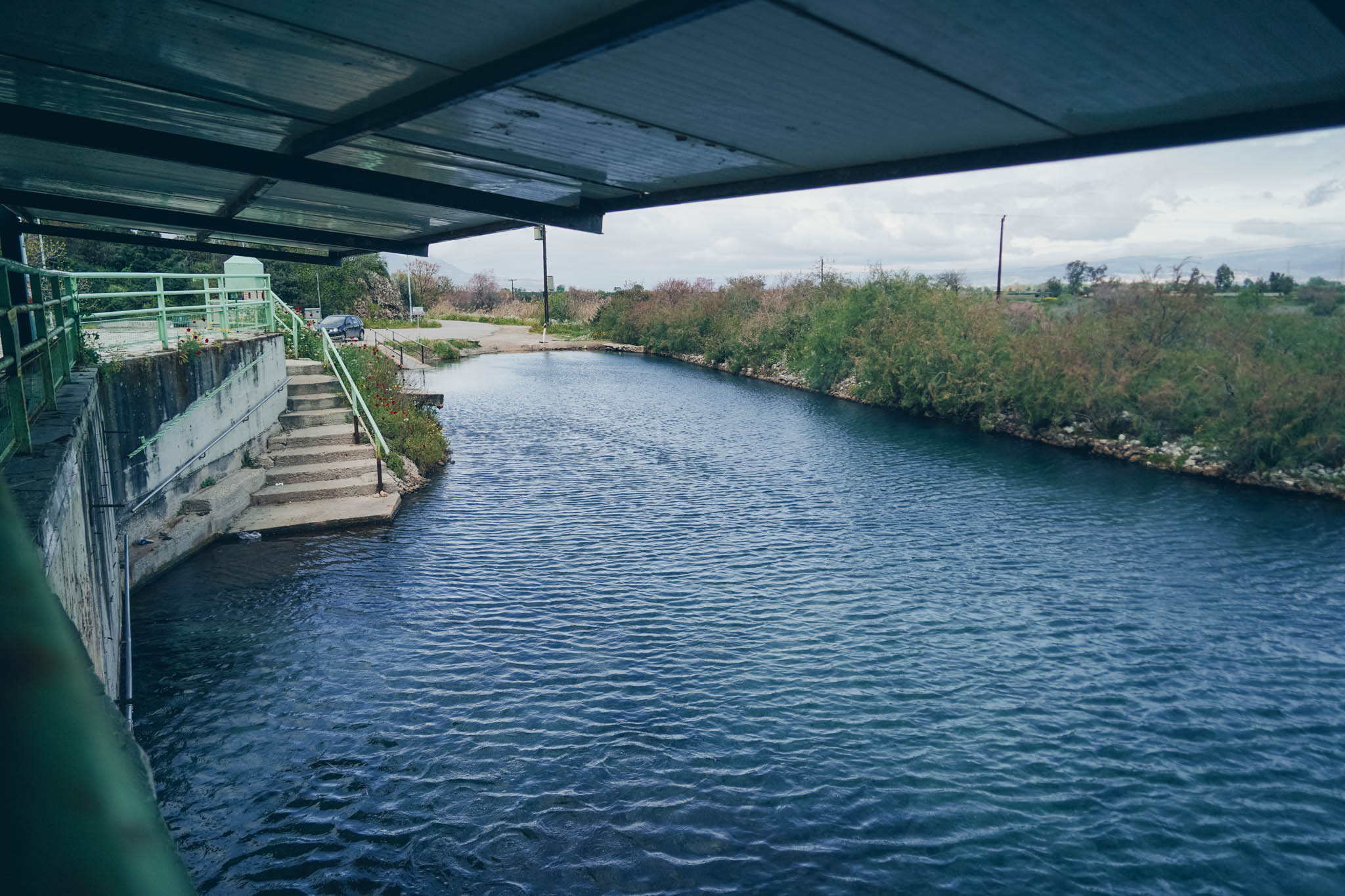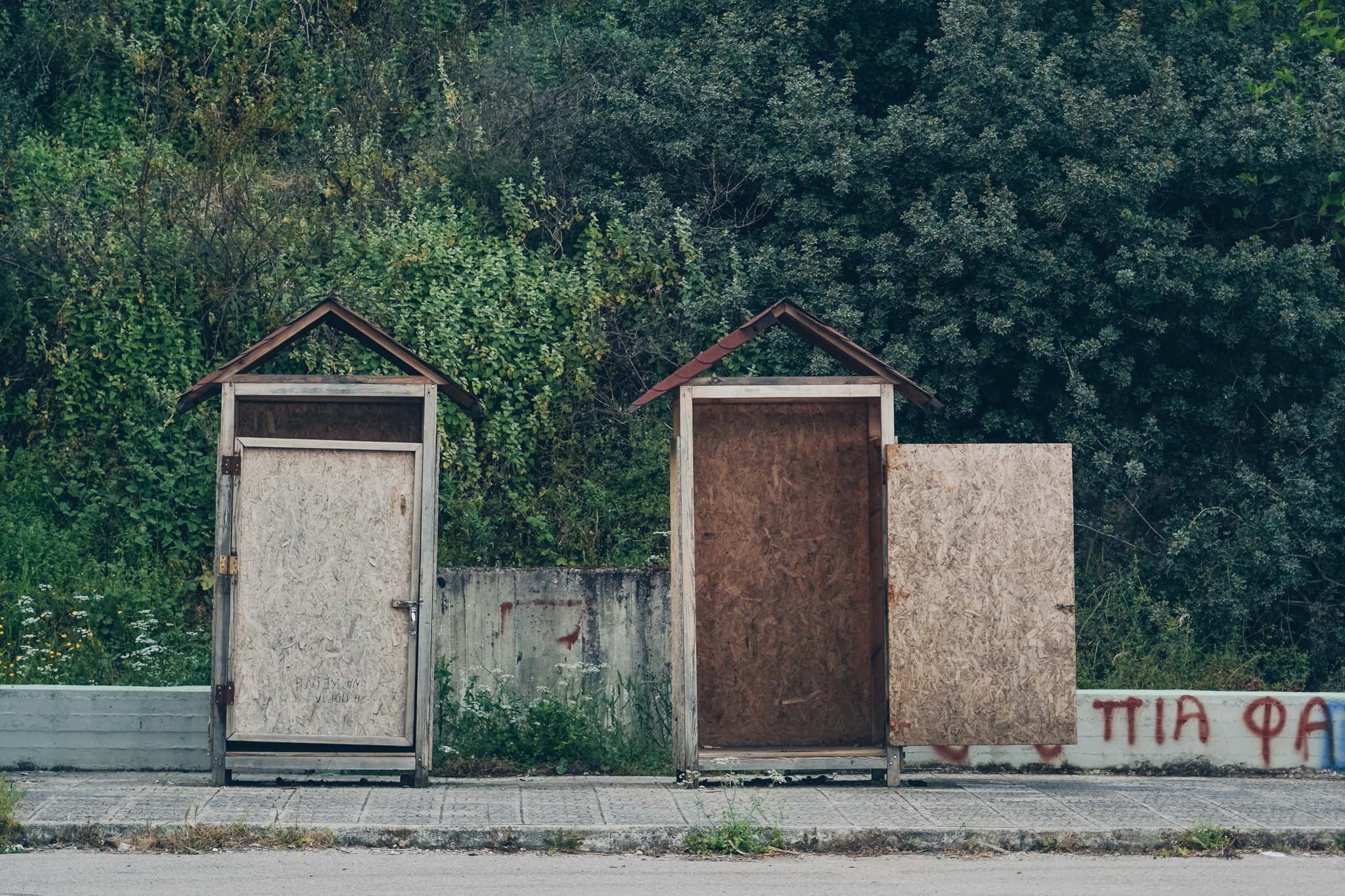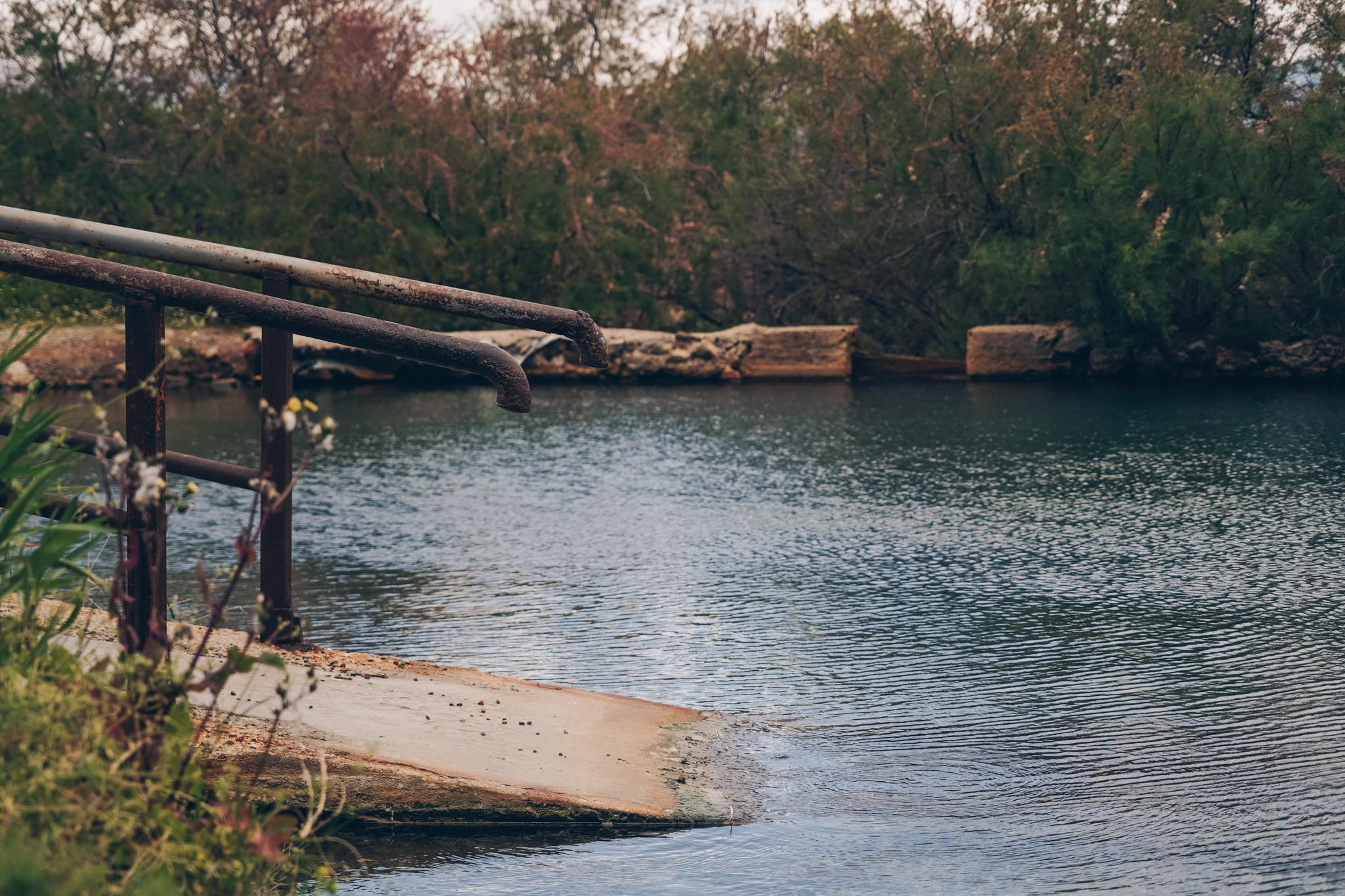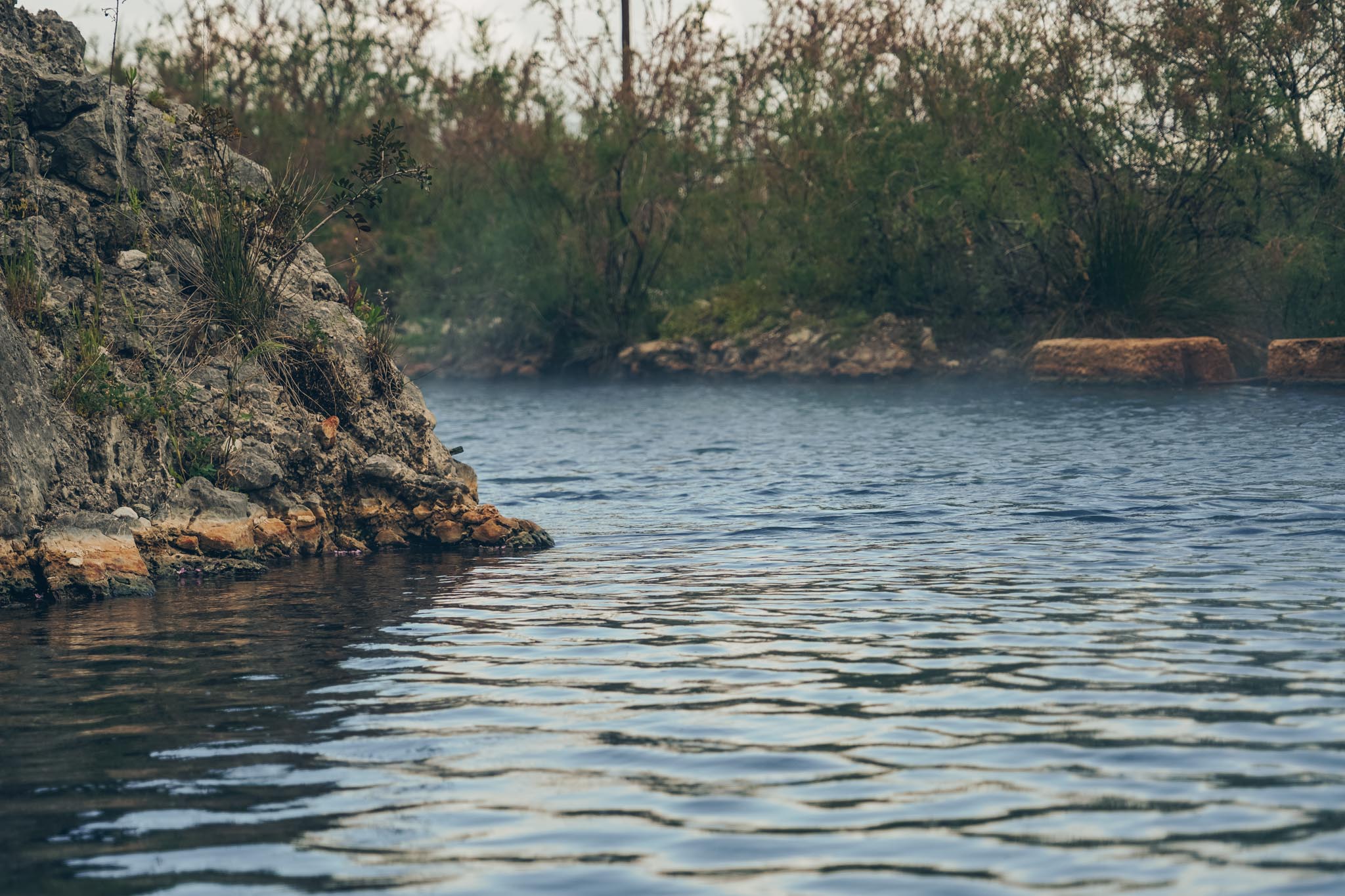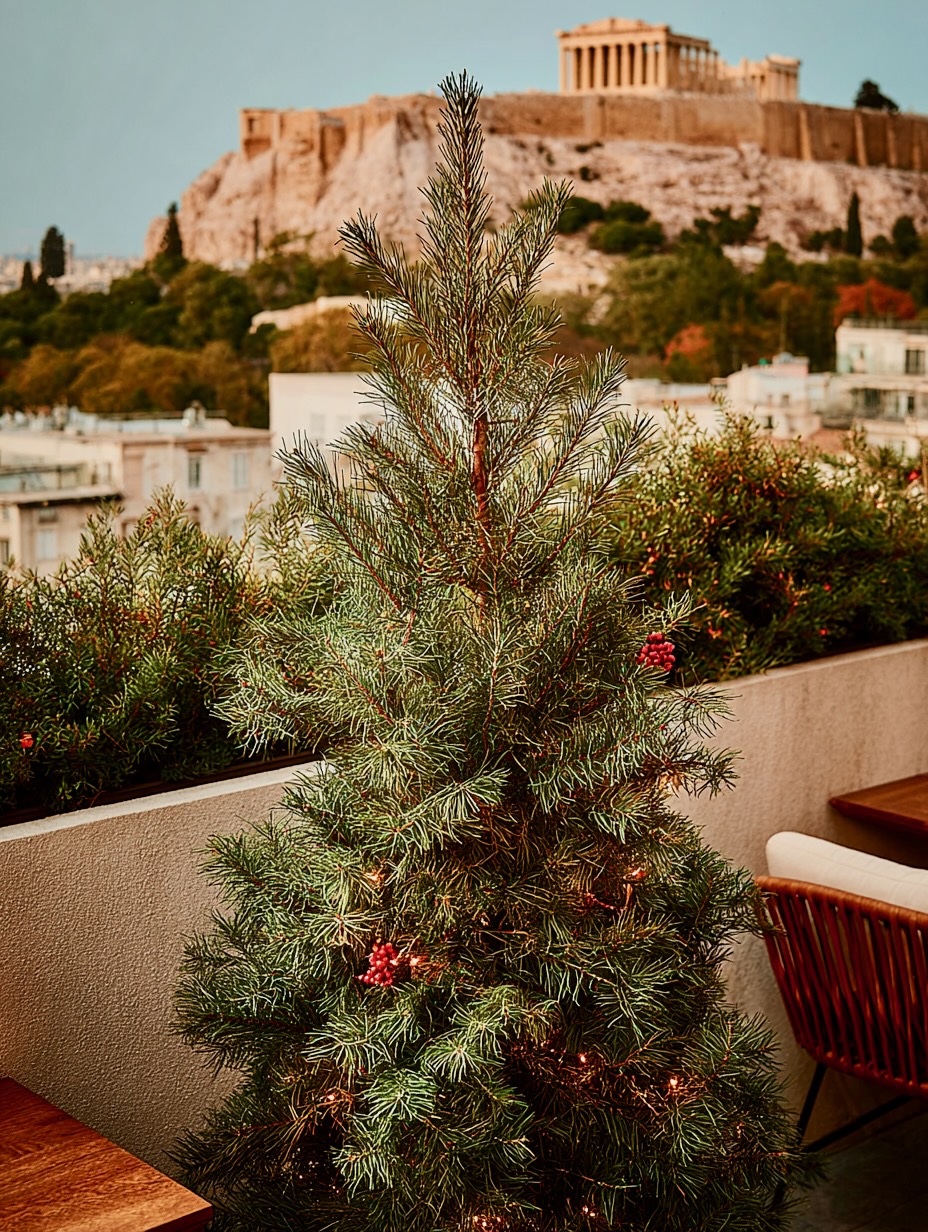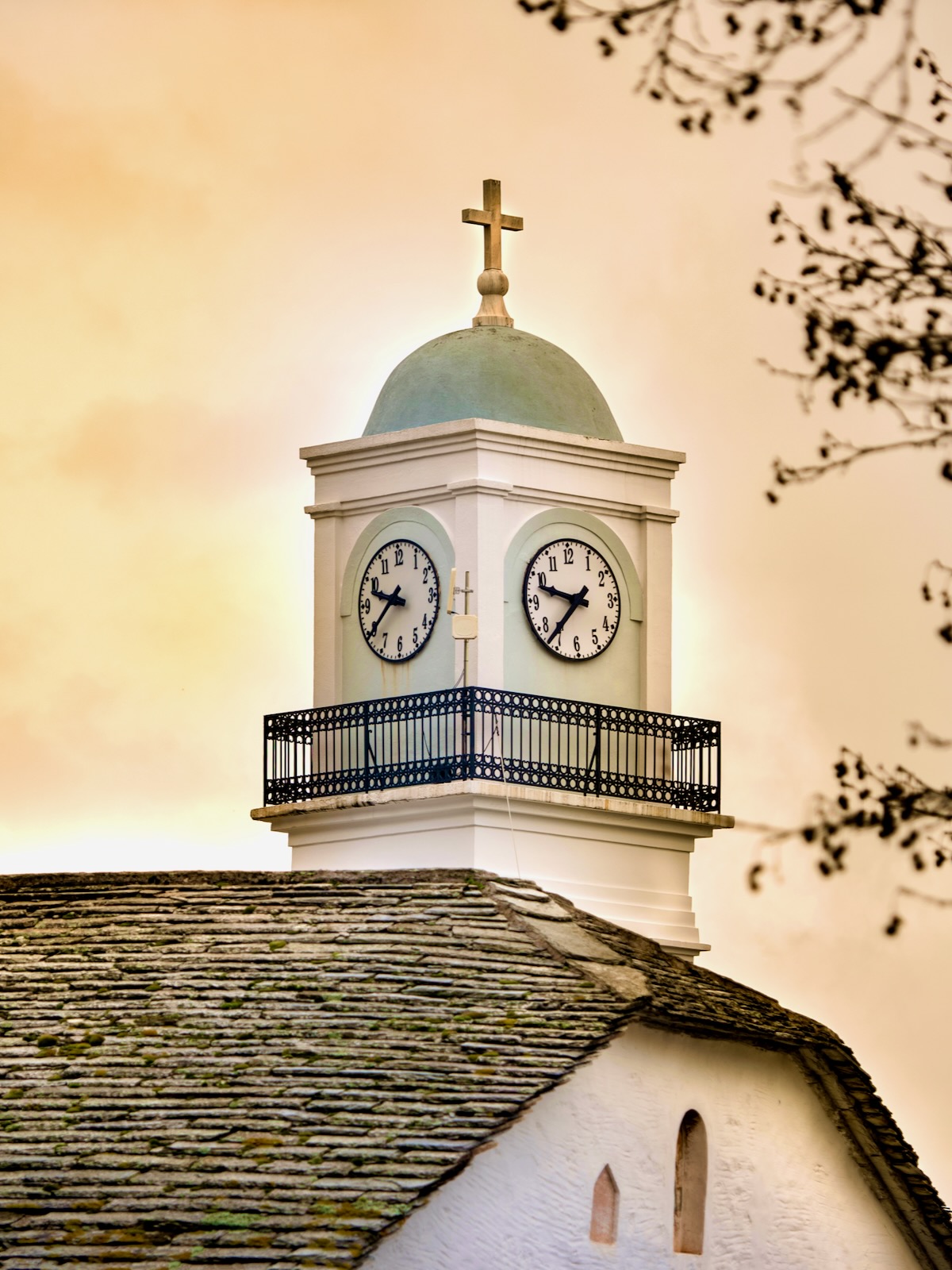Part of Fthiotida’s thermal spring network and six kilometres from Lamia, the hot springs of Kallidromos, little known today, have been welcoming all those who seek health and peace of mind, from antiquity to the present day.
Psoroneria, as they have been called for years, got their name from their ability to cure psoriasis. At one point on Mount Kallidromo, a natural pool is formed, the waters of which have a temperature of 33°C and improve skin diseases as well as rheumatism, arthritis and sciatica.
Kallidromos springs have been famous for thousands of years. According to legend, Athena asked Gaia to create Psoroneria along with the nearby thermal baths of Thermopylae. The goddess then gave them as a gift to Hercules so that the hero could heal his wounds when he returned from his labours. As far as we know, their miraculous properties were first mentioned by Herodotus. Hippocrates, the father of medicine, after investigating them thoroughly, also confirmed their beneficial effects. Besides, geographer Pausanias claimed that the spring featured the clearest and bluest waters he had ever seen.
Indeed, from antiquity onwards, locals and travellers alike appreciated and availed themselves extensively of the springs. This is further confirmed by the archaeological findings in the area, which, among other things, testify that in the 2nd century AD Herod Atticus had built tanks in the baths for public use.
Yet, today there is no infrastructure in the baths of Kallidromos. The baths are accessible by steps and platforms, but there are no facilities for visitors to dry and dress themselves, protected from the cold. Where the warm changing rooms are missing, however, there is something else, beautiful and relaxing, and therefore stress-relieving.
That is, the lush nature surrounding the springs. As a natural pool, it also has natural walls, green from the overgrown vegetation, but also, as Mount Kallidromo descends here, rocky. The mountain is known for its natural beauty, as well as for its ecologically sensitive areas. Its summit, Gkioza, reaches an altitude of 1,419 metres. As for its flora, it is rich in fir, birch and oak trees, pine and holly.
The mountain is long, though not particularly high. It is located between Mount Oeta and Mount Chloro. Its atmosphere is eerie and completely unique. Under its towering trees there are glades and meadows, picnic and camping areas, while the landscape is completed by two large leas and many small and large lakes that take on the colours of the sky. One of these is the impressive Kallidromos Lake, located at an altitude of 1,000 metres, where the waters that come down from the surrounding slopes meet when the snow melts in winter.
Given its beauty, Kallidromo is a favourite destination for hiking and mountain biking, activities facilitated by the many trails and the large network of passable dirt roads. One of its most famous hiking trails is the so-called Anopaea Odos, which was crossed by the Persians under the guidance of the Greek traitor Ephialtes in order to bypass the narrow passage of Thermopylae and ambush Leonidas and the Spartans.
Nature lovers have plenty of options here, as they can combine a relaxing soak in the warm thermal waters with a refreshing walk on the cool mountain.



